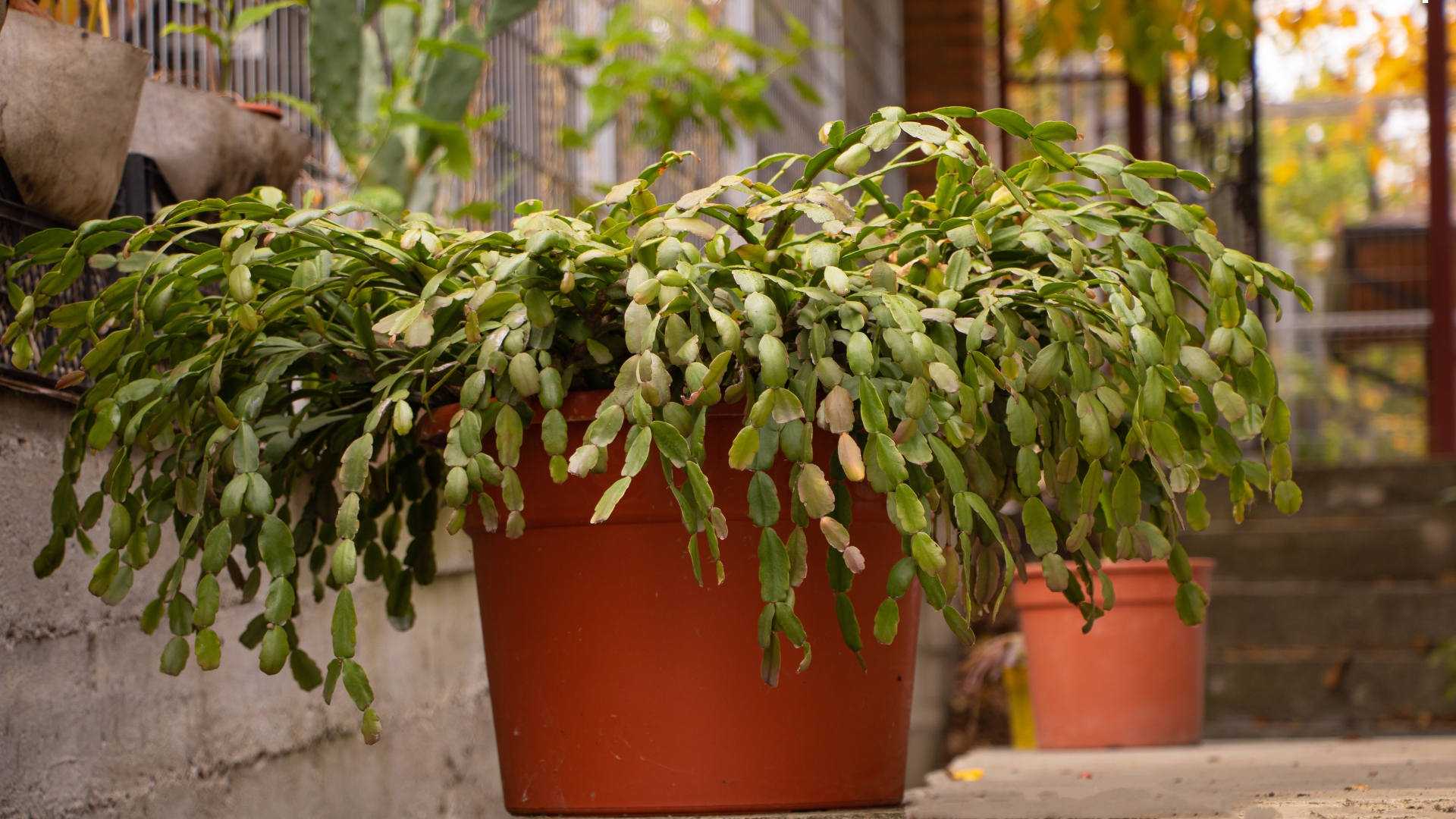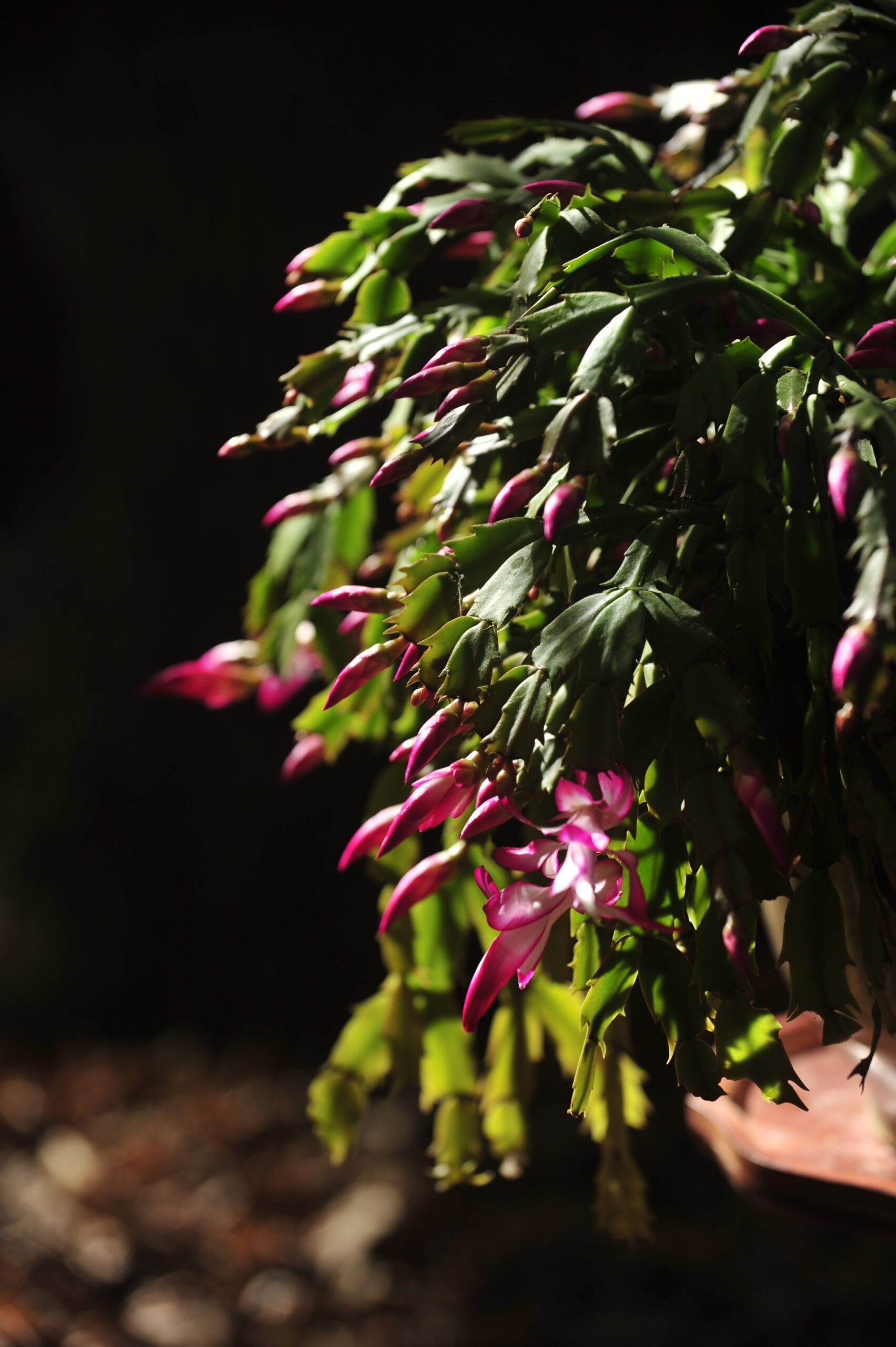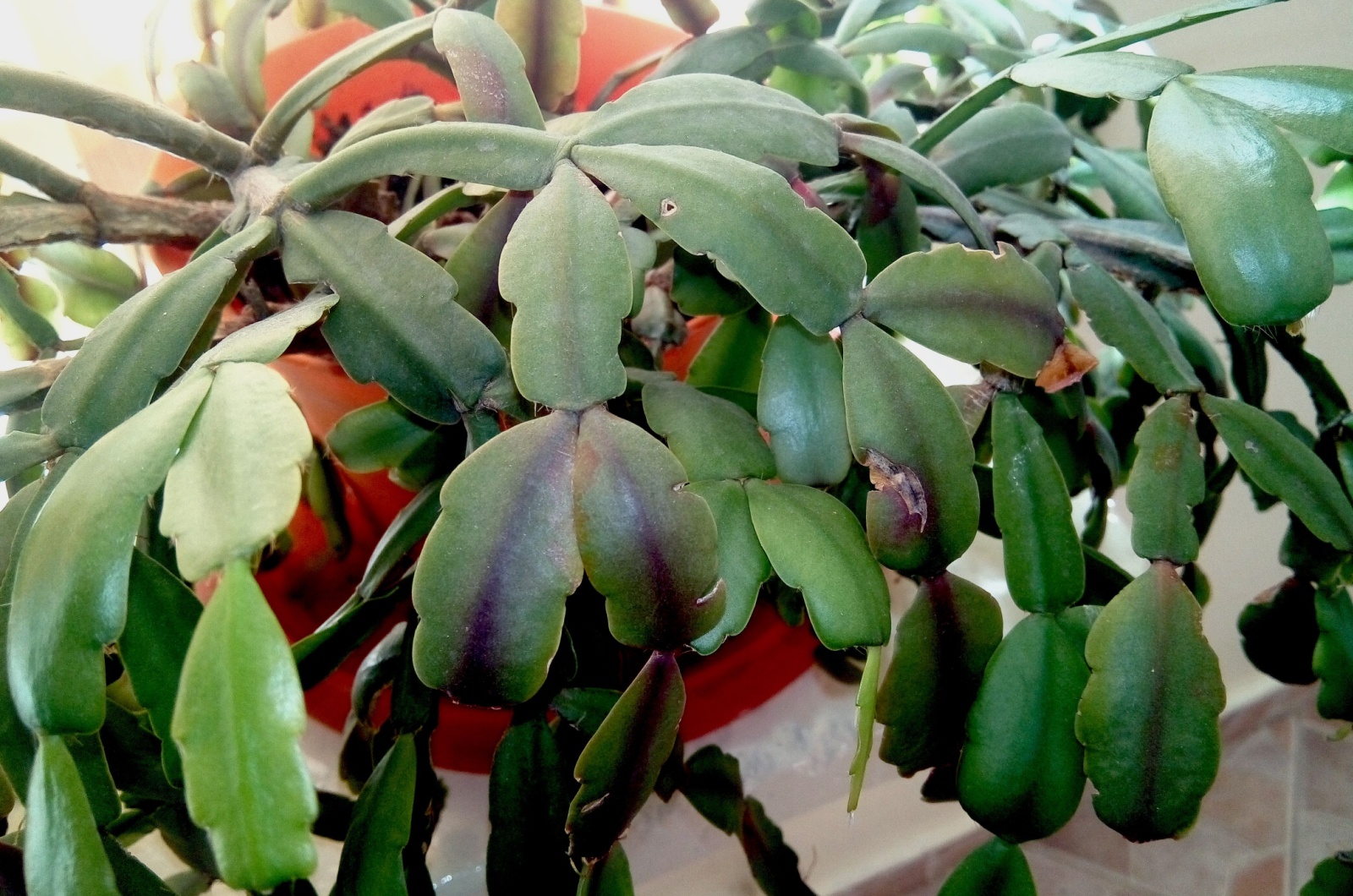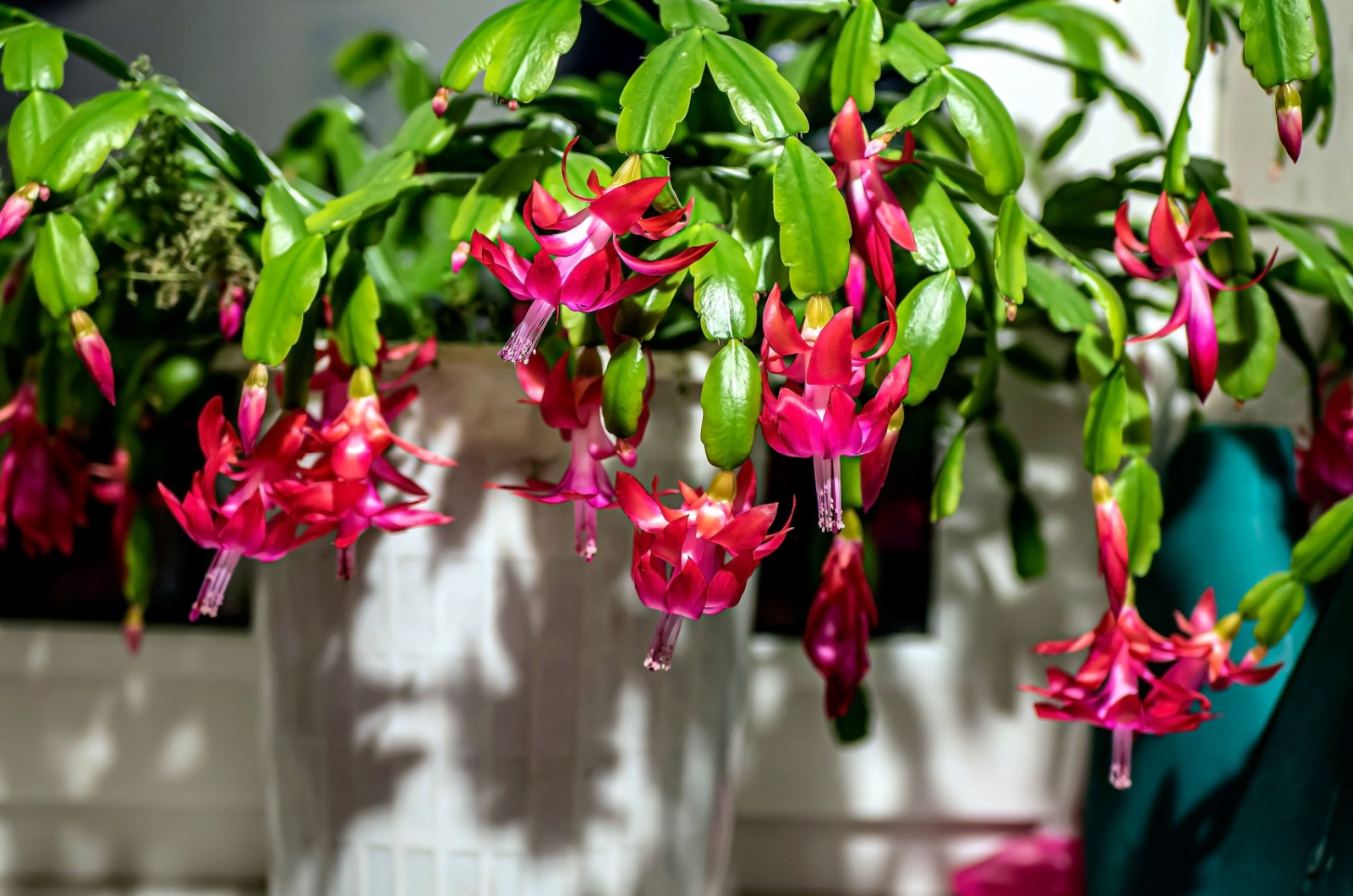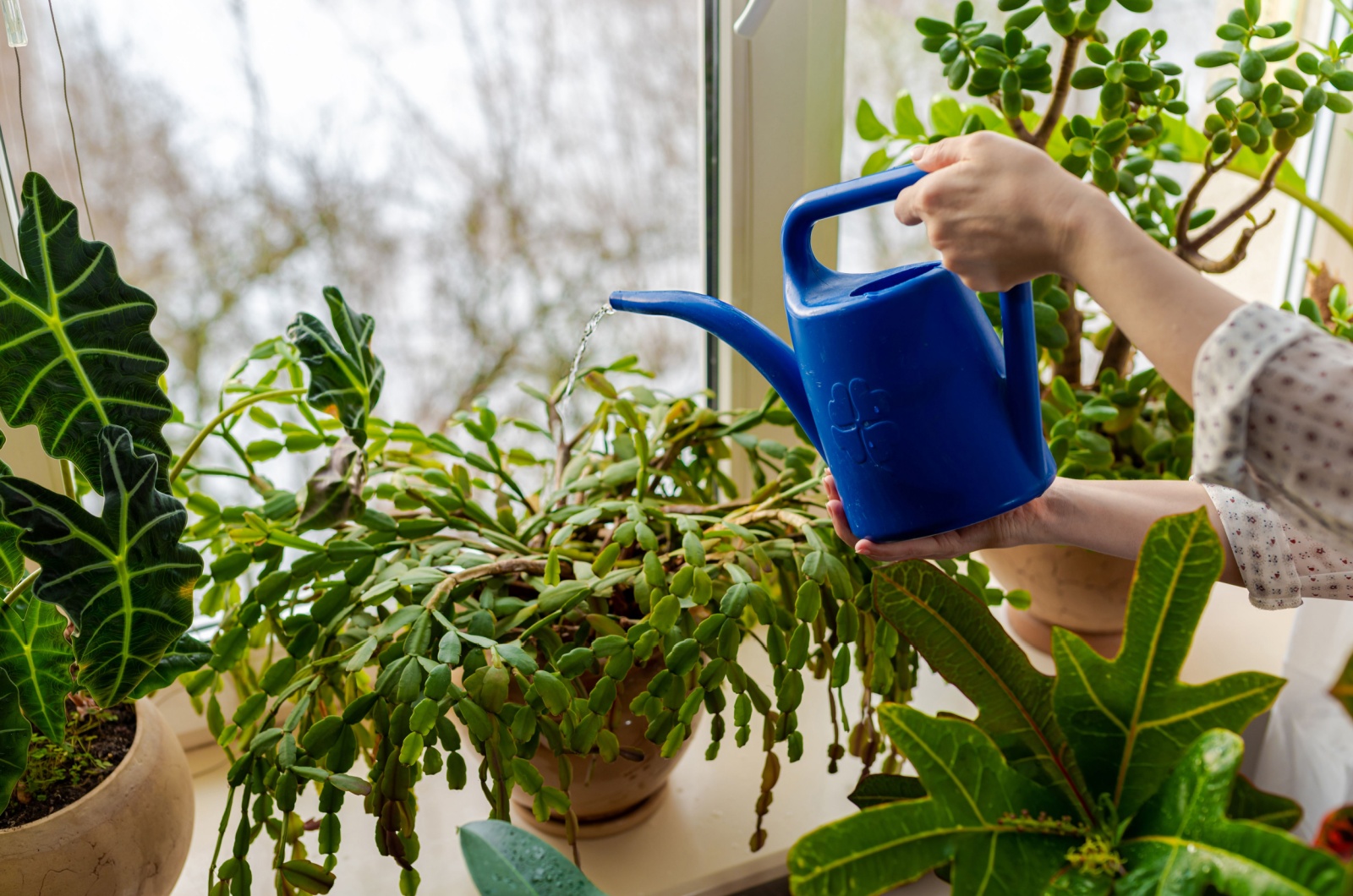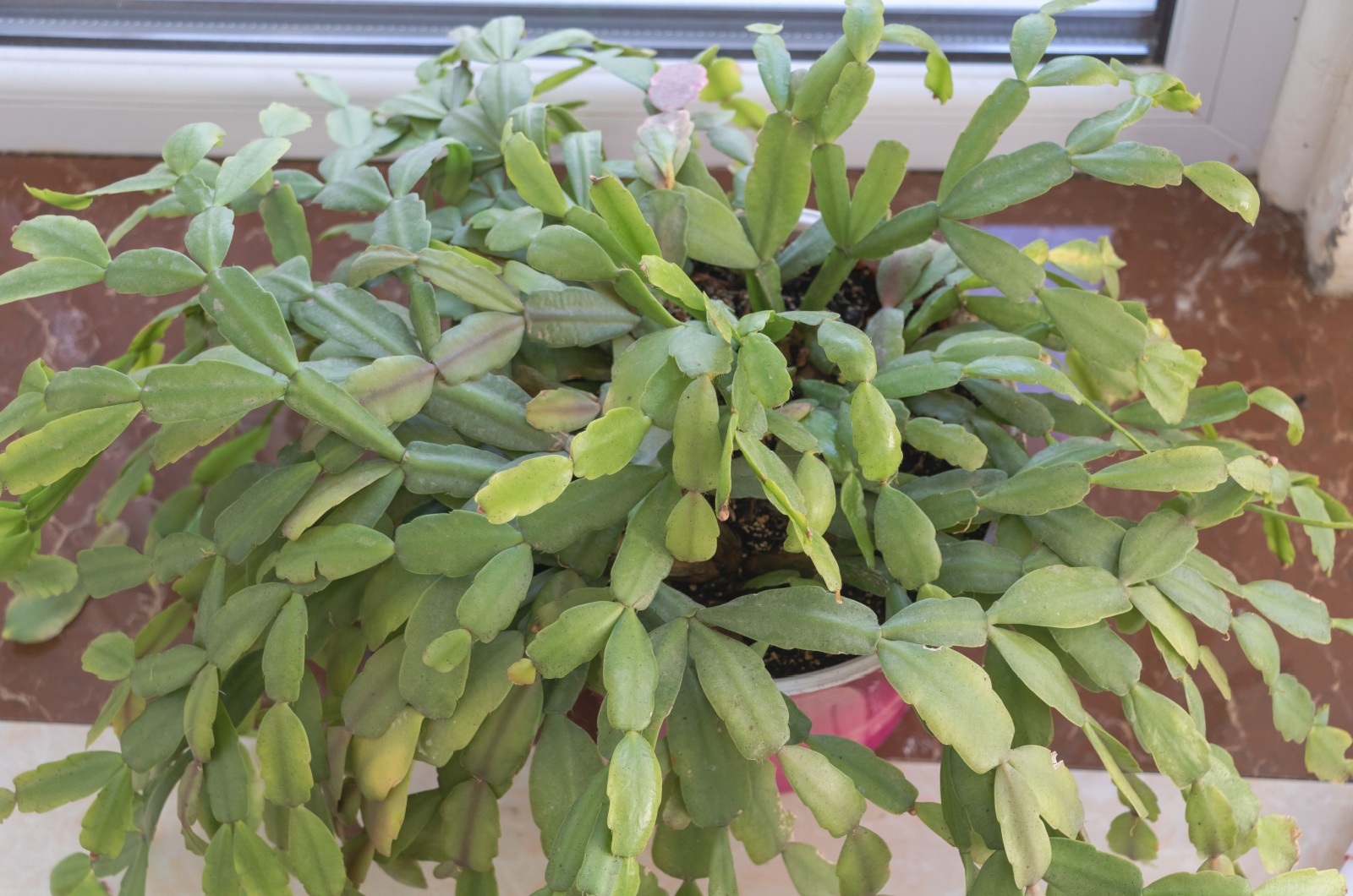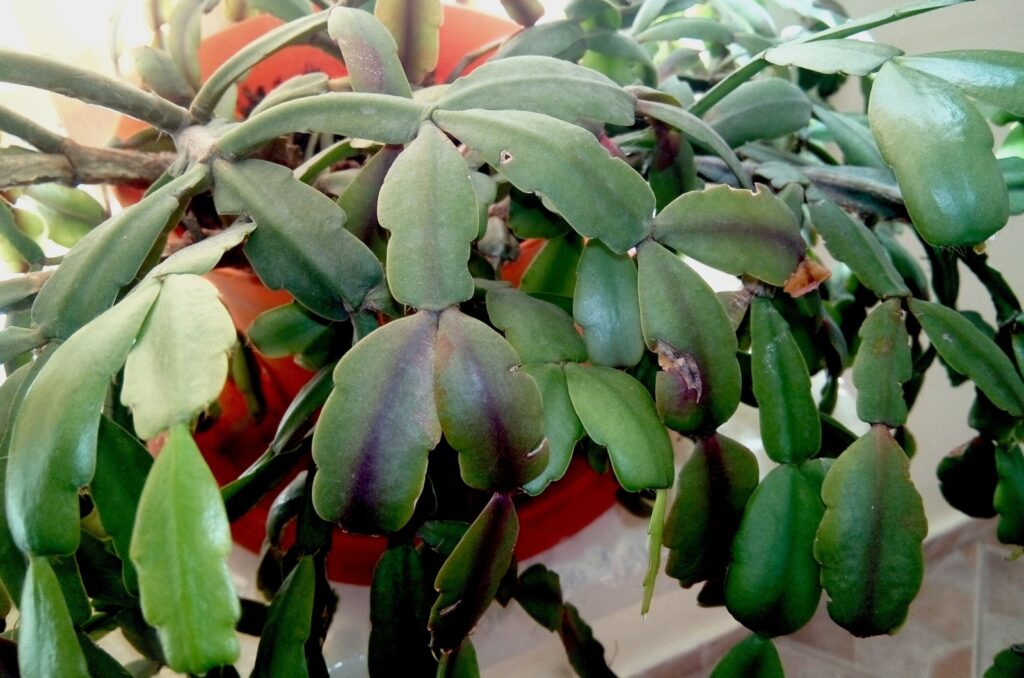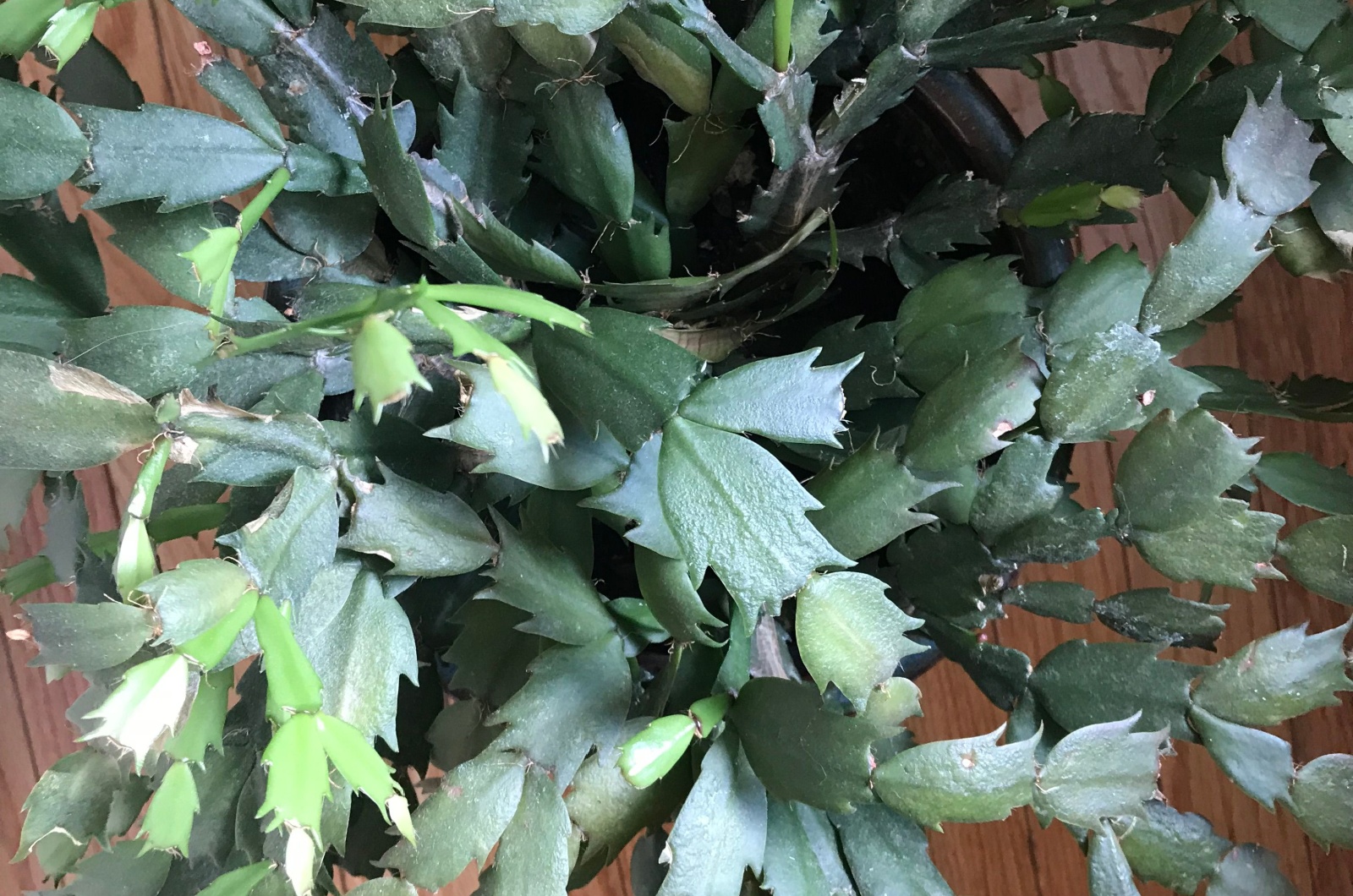My fellow gardeners, it’s almost time for your Christmas cactus to open its gorgeous blossoms. For me, there isn’t anything prettier and I can’t imagine my holidays without these plants.
But what happens when your Christmas cactus simply fails to bloom? Oh, it’s definitely an unpleasant holiday surprise. Of course, I panicked when it happened to my Christmas cactus for the first time.
I pulled out all the stops to save the plant and bring back those blooms. But don’t rush; before you do anything, you must know what went wrong.
Figuring out the cause is half the battle, trust me. So, what’s keeping your Christmas cactus from blooming? It’s not just one culprit, there are four, so be sure to leave no stone unturned!
Let’s do this together!
1. You Didn’t Ensure Enough Darkness
Wait, plants need light to bloom, why would we pay attention to darkness? Well, the Christmas cactus is a special plant in many ways.
Yes, it needs light to grow and bloom, but it also needs a specific amount of darkness throughout the night.
We often refer to Schlumbergera (scientific name) plants as long night/short day bloomers. This means they need approximately 15 hours of darkness per night for their blossoms to open.
I’ve always wondered how those plants in supermarkets bloom at the right time, and believe it or not, this ‘darkness hack’ is the reason.
So, should you keep your Christmas cactus in the dark? Yes, until the buds form and start opening!
2. Your Christmas Cactus Is Too Warm Through The Night
Christmas cactus is native to tropical areas, which means it likes warm temperatures, right? Remember when I said this is a special plant? It does prefer warm conditions during the day, but for the night, the story is a bit different.
You see, in their native habitat, i.e., Brazilian rainforests, Christmas cactuses are faced with cooler temperatures during the night. We should mimic these exact conditions in our homes.
Temperatures ranging from 55 to 60 degrees Fahrenheit are necessary for your Christmas cactus to rebloom!
3. Light Is Too Scarce During The Day
We’ve seen how Christmas cactuses are used to longer periods of darkness during the night, but what about light throughout the day?
Yes, they need enough light or they won’t bloom. The telltale sign of lack of light in Christmas cactuses is stretchy growth that results in a leggy plant.
But be careful with the type of light you ensure for your Schlumbergera plants. These species aren’t true cactuses (they only share the name) so they aren’t used to direct sun.
Bright indirect light is the key to a happy and healthy Christmas cactus!
4. Your Watering Routine Is Wrong!
I’m sure most of you expected to see that watering is one of the main culprits for a non-blooming Christmas cactus.
Some gardeners believe that this is a real cactus plant so they don’t water it a lot. As I said, this isn’t a cactus but rather a tropical plant used to hot and humid conditions.
It prefers the soil to be moist but never waterlogged. You should never allow the soil to dry entirely before you water your Christmas cactus. If you do, you could end up with a poorly developed plant with zero blooms.
On the other hand, some growers believe that the Christmas cactus needs a lot of water because it’s native to the tropics. This is not a good approach either because overwatering leads to various problems, and trust me, lack of blooms is the least serious.
To check if a poor watering routine is the culprit for your non-blooming Christmas cactus, simply take a look at the soil. If it’s dry and crumbles to the touch, you’re dealing with a dehydrated plant.
If the soil is soggy and smells bad, then overwatering is most likely to blame.
5. You Overfed Your Christmas Cactus
Feeding your Christmas cactus too much is like giving a kid candy for every meal – it sounds nice, but it’s a recipe for disaster.
Overloading your plant with nitrogen-heavy fertilizers will make it focus on growing leafy greens instead of dazzling blooms.
Plus, too much fertilizer can lead to salt buildup in the soil, scorching the roots and making flowering a distant dream. Stick to a balanced, bloom-friendly fertilizer, and remember: a little goes a long way. Overfeeding may give you a jungle, but it won’t deliver the holiday magic.
6. Or Didn’t Ensure Enough Nutrients At All
On the flip side, a starving cactus is a sad cactus – and one that refuses to bloom. Without enough nutrients, your plant simply doesn’t have the energy to produce those festive flowers.
This problem is especially common if you’ve been using the same soil for years. Think of it as running on empty!
To remedy this, start feeding your cactus with a blooming plant fertilizer during the growing season. A well-fed Christmas cactus is a blooming machine, so don’t skip its meals!
7. The Plant Isn’t Pruned Correctly
A bad haircut can ruin anyone’s style, right? Well, the same refers to your Christmas cactus!
Pruning is a must for healthy growth, but snipping away at the wrong time or too aggressively can sabotage next year’s blooms.
Trim your Christmas cactus right after it finishes flowering to encourage fresh growth and extra blossoms.
But if you prune too close to the holidays, you’ll be left with a bald cactus and zero festive flair. Timing is everything, so snip smartly to set the stage for a flower-filled season.
8. Conditions Are Too Drafty
Drafty conditions are the ultimate Christmas cactus buzzkill. Whether it’s cold air from a leaky window or hot blasts from a heater, inconsistent airflow stresses your plant and makes it drop its buds faster.
Keep your cactus cozy by placing it in a draft-free spot with steady temps. Think of it as tucking your plant in with a warm blanket!
9. Pests Attacked The Plant
Pests like mealybugs, spider mites, and scale insects are tiny troublemakers that sap the energy your plant needs to flower. The result? A stressed, bloomless cactus that feels more like a holiday letdown.
Keep an eye out for sticky, shiny residue on the leaves or stems – it’s a clear sign of pests like mealybugs or scale insects feeding on the plant.
Spotting fine, spider-like webbing? That’s the work of spider mites, which can quickly weaken your cactus.
Notice small, cottony white clusters tucked in leaf joints or along the stems? Those are likely mealybugs setting up shop. Even subtle yellowing leaves or slowed growth can indicate an infestation.
Don’t let these pests ruin the show! Grab some neem oil or insecticidal soap and treat your plant thoroughly, making sure to reach every crevice.
Reapply every few days until the pests are gone. Regularly inspect your cactus to catch any new invaders early. Once you evict these freeloaders, your Christmas cactus will have the energy to bloom and brighten your holidays once again!
10. Your Christmas Cactus May Be Diseased
And now, the worst problem of all! Diseases like root rot and fungal infections are the true villains behind the scenes, silently sabotaging your Christmas cactus’s blooming potential.
Root rot, often the result of overwatering, is a sneaky destroyer. It turns once-healthy roots into mushy, brown, and foul-smelling remnants, leaving your plant too weak to produce its iconic blooms.
If you notice yellowing leaves, a drooping plant, or soil that stays soggy for too long, it’s time to check those roots.
Fungal infections are no less destructive. They creep up the stems, leaving dark, sunken scars that weaken your cactus and drain it of energy. Powdery mildew may appear as a white, dusty coating, while stem rot might cause sections to collapse altogether.
The fix? Start with wise watering habits. Only water when the top inch of soil feels dry, and ensure your pot has excellent drainage.
Refresh the soil periodically to prevent a buildup of pathogens. If you spot signs of disease, remove affected parts immediately and treat with a fungicide.
And remember, regular check-ups are your best defense!
How To Get Your Christmas Cactus Back On Track
Now that you know the potential culprits, it’s time to learn how to encourage your Christmas cactus to bloom again. Here are the 4 easy steps you should follow:
1. Put it near a window: The best location for your Christmas cactus is somewhere near an east- or west-facing window where it can receive filtered light throughout the day.
2. Ensure darkness and cooler temps: Make sure to keep your Christmas cactus in a spot where it can receive about 15 hours of darkness per night. Additionally, the temperature should range from 60 to 70 degrees Fahrenheit.
3. Allow the soil to dry a bit between waterings: Regularly inspect the soil moisture and water your Christmas cactus whenever the top 2 inches of the soil dry out.
4. Repot: If you meet all the requirements but your Christmas cactus fails to bloom, consider repotting it. Plants grow and need more space and nutrients during the process. Simply transplant it into a larger pot and use new potting soil.
Unfortunately, a non-blooming Christmas cactus is a more common hiccup than we’d like, but if we nip it in the bud and follow the steps above, those blooms will be back before you know it!

